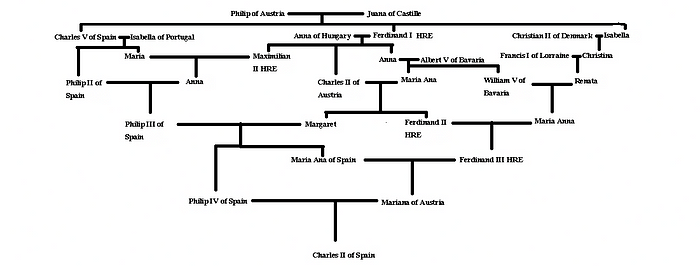Member-only story
The Autopsy of Charles II of Spain
How the inbred king’s body revealed the maladies that plagued his miserable life

The prime example of the rampant inbreeding common in the Hapsburg royal family manifested most grotesquely in the pathetic figure of Charles II of Spain. Generations of interfamilial marriage led to the end of the Hapsburg’s control of Spain and the unfortunate existence of the young king known as The Bewitched.
The Hapsburg family promoted the intermarriage of relatives to preserve their family’s control of kingdoms in Spain, the Netherlands, Hungary, Italy, and Germany. King Matthias of Hungary summed up this policy in a neat saying: “Let others wage war, you, O happy Austria, marry.” And marry they did, unfortunately often to their own close relatives.
Charles’ father, Philip IV of Spain was the maternal uncle of his mother, Mariana of Austria. Yet this was not the only incestuous marriage on the Hapsburg tree. Beyond this close relationship, all of Charles’ great grandparents were descendants of Juana of Castile and her husband, Philip of Austria. Charles’ family tree involved numerous marriages between uncles and nieces as well as first and second cousins between the Spanish and Austrian branches of the Hapsburg tree.

Charles suffered from the infamous Hapsburg jaw, a trait common to many of his ancestors and discussed more in depth here. Charles’ lower jaw protruded so severely he was unable to speak until he was four years old and had difficulty chewing his food. As a child, he suffered from all sorts of maladies, each one life-threatening in this time period: measles, chickenpox, smallpox, and rubella. Despite his unhealthy constitution, he miraculously survived each of these deadly diseases and defied his doctor’s expectations.

His mother, Mariana, feared taxing the boy’s fragile body, so mandated that he be carried everywhere until he was eight years old. Charles was not required to…
